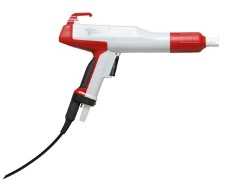Content Menu
● 1. Neglecting Proper Grounding and Electrical Safety
>> Importance of Grounding in Electrostatic Coating
>> Consequences of Inadequate Grounding
>> Best Practices for Grounding
● 2. Using Incorrect Voltage and Pressure Settings
>> Significance of Correct Voltage Levels
>> Impact of Inappropriate Pressure Settings
>> Optimal Settings for Best Results
● 3. Poor Maintenance and Equipment Calibration
>> Importance of Regular Maintenance
>> Effects of Miscalibration
>> Maintenance Checklist and Tips
● 4. Not Considering Environmental Conditions
>> Effect of Temperature and Humidity
>> Ventilation and Safety Precautions
>> Managing Environmental Factors
● 5. Overlooking Safety Measures and Personal Protective Equipment
>> Recognizing Hazards
>> Essential Safety Equipment
>> Safety Protocols and Training
● Conclusion
● Frequently Asked Questions (FAQs)
>> What are the common signs of improper grounding?
>> How often should I calibrate my electrostatic spray gun?
>> Can environmental humidity affect electrostatic coatings?
>> What safety precautions are necessary during electrostatic spraying?
>> How do I maintain my electrostatic spray gun?
Electrostatic spray guns are revolutionary in the coating industry, offering high efficiency, reduced overspray, and superior finish quality. Yet, their proper operation requires understanding specific techniques and precautions. Mistakes during application can lead to uneven coating, equipment damage, safety hazards, and increased costs. Recognizing these common errors and knowing how to avoid them can significantly improve your coating process and outcomes.

1. Neglecting Proper Grounding and Electrical Safety
Importance of Grounding in Electrostatic Coating
In electrostatic spray systems, grounding is crucial because it completes the electrical circuit. The object being coated must be properly grounded to attract the charged particles. Improper grounding can lead to poor spray performance, uneven coating, and even electrical hazards.
Consequences of Inadequate Grounding
Failing to ensure proper grounding can cause the spray gun to malfunction, resulting in inconsistent spray patterns or sparks that may ignite flammable materials. It also increases the risk of electric shock to the operator, especially in environments with volatile fumes.
Best Practices for Grounding
Always verify that the object to be coated and the spray gun are correctly grounded according to manufacturer specifications. Use grounding cables that are in good condition and properly attached to a true ground point. Regularly inspect and maintain grounding systems to prevent deterioration or accidental disconnection.
2. Using Incorrect Voltage and Pressure Settings
Significance of Correct Voltage Levels
The electrostatic spray gun operates effectively within a specific voltage range. Too high voltage can cause arcing or sparking, damaging equipment or creating safety hazards. Too low voltage may result in poor particle charging, leading to uneven coating and wastage.
Impact of Inappropriate Pressure Settings
Spray pressure influences atomization and spray pattern. Excessive pressure can lead to overspray, waste of materials, and uneven coating. Inadequate pressure may cause poor atomization, resulting in rough finishes or missed spots.
Optimal Settings for Best Results
Always follow the manufacturer's recommended voltage and pressure settings for your specific model and coating material. Adjust settings based on environmental conditions and the type of surface being coated. Conduct test sprays to fine-tune parameters before large-scale application.
3. Poor Maintenance and Equipment Calibration
Importance of Regular Maintenance
Electrostatic spray guns consist of intricate components that can become clogged or worn over time. Neglecting maintenance reduces spray quality, increases the risk of malfunction, and shortens equipment lifespan.
Effects of Miscalibration
Incorrect calibration of the spray gun's voltage, pressure, or flow rate can lead to inconsistent coatings, wastage, and rework costs. Ensuring that equipment is calibrated regularly guarantees uniform application and maximizes efficiency.
Maintenance Checklist and Tips
Develop a routine maintenance schedule including cleaning nozzles, checking electrical connections, and inspecting hoses and filters. Calibrate the spray gun periodically using the manufacturer's procedures. Replace worn parts promptly to maintain optimal operation.
4. Not Considering Environmental Conditions
Effect of Temperature and Humidity
Environmental factors like temperature and humidity significantly affect electrostatic coating. High humidity can cause static dissipation, reducing attraction of paint particles. Cold temperatures may slow drying time, while high temperatures may cause cracking or bubbling.
Ventilation and Safety Precautions
Proper ventilation is necessary to dissipate fumes and prevent the buildup of potentially explosive vapors. In enclosed or poorly ventilated areas, the risk of fire or health hazards increases.
Managing Environmental Factors
Always perform spraying in controlled environments where temperature and humidity are within the recommended ranges. Use dehumidifiers or heaters as needed, and ensure adequate ventilation meets safety standards. Scheduling application during optimal conditions improves coating quality.
5. Overlooking Safety Measures and Personal Protective Equipment
Recognizing Hazards
Electrostatic spraying involves high-voltage electricity, flammable materials, and harmful vapors. Ignoring safety protocols can result in serious injuries, fires, or health issues.
Essential Safety Equipment
Wear appropriate personal protective equipment such as gloves, goggles, respirators, and flame-resistant clothing. Ensure electrical connections are secure and insulated to prevent shocks.
Safety Protocols and Training
Provide comprehensive training to operators on equipment handling, emergency procedures, and safety precautions. Keep fire extinguishers and first aid kits nearby. Regularly review safety standards and update practices accordingly.
Conclusion
Using a manual electrostatic spray gun effectively and safely requires attention to detail and adherence to best practices. Avoiding these common mistakes – improper grounding, incorrect settings, poor maintenance, environmental neglect, and safety complacency – can vastly improve coating quality, equipment longevity, and operator safety.

Frequently Asked Questions (FAQs)
What are the common signs of improper grounding?
Poor coating uniformity or uneven spray patterns frequently indicate grounding issues. Sparks or electrical arcs can also signify grounding problems, increasing safety risks.
How often should I calibrate my electrostatic spray gun?
Calibrate your spray gun regularly, ideally before each use or at least daily, especially after equipment maintenance or environmental changes, to ensure consistent performance.
Can environmental humidity affect electrostatic coatings?
Yes, high humidity can reduce static charge and lead to inefficient spray and poor adhesion. Maintaining optimal humidity levels is essential for quality application.
What safety precautions are necessary during electrostatic spraying?
Always wear PPE, ensure proper grounding, keep flammable materials away, and work in well-ventilated areas. Follow manufacturer instructions and safety standards strictly.
How do I maintain my electrostatic spray gun?
Regularly clean nozzles, check electrical connections, replace worn parts, and calibrate settings. Follow manufacturer guidelines for maintenance intervals.
Hot Tags: China, Global, OEM, private label, manufacturers, factory, suppliers, manufacturing company










































 .
. 